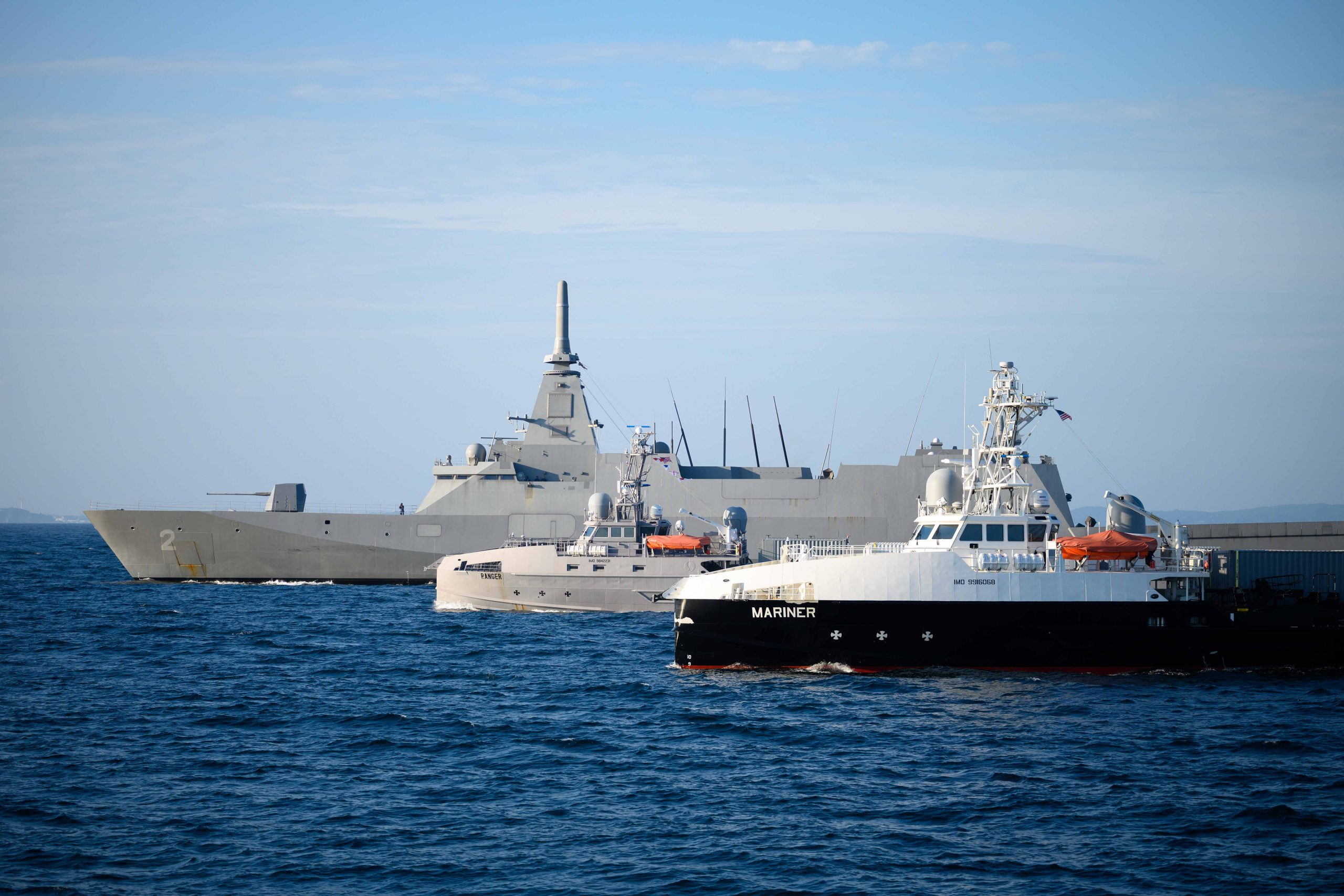Following a five-month mission in the Pacific, the U.S. Navy has concluded its groundbreaking deployment of four unmanned surface vessels (USVs), namely Sea Hunter, Sea Hawk, Mariner, and Ranger. Departing from Southern California on August 7, the prototypes covered 46,651 nautical miles, visited ports in Japan and Australia, and operated autonomously for up to 50 days at a time. This marks a significant step toward integrating unmanned capabilities into crewed fleet operations, with successful testing of concepts for operations, crewing assumptions, and maintenance needs.

Photo from: Defense News
Command and Control Successes
The deployment, overseen by the U.S. Pacific Fleet, aimed to evaluate the unmanned ships in a real-world, forward-deployed environment. With sailors and Marines aboard operational ships, the Navy tested existing concepts of operations and assessed crewing assumptions and maintenance predictions. The successful deployment positions the Navy to refine these concepts for potential implementation in future operational USVs.
Commander Jeremiah Daley, head of Unmanned Surface Vessel Division One, reported that the deployment validated the concepts for operations and sustainment. He asserted that if the Navy were to order the construction of the first operational large or medium USV today, the refined concepts could be implemented when the ship is delivered to the Fleet. However, Daley acknowledged the need for further testing and refinement.
During the deployment, the command and control of the vessels were an area of success. Sea Hunter and Sea Hawk, lacking accommodations for people, were controlled from the Unmanned Operations Center in California or aboard another Navy ship in the region. The success of various control experiments from ashore and at sea has become one of the most mature aspects of the concept of operations.
Challenges in Network Integration
While control aspects showed promise, challenges remain in integrating the USVs and their payloads into the broader network of sensors and shooters. Daley emphasized the need for improved integration to ensure that the Navy and joint forces can effectively leverage data collected by the USVs. The Navy is developing the Integrated Combat System to address this challenge, enhancing seamless data sharing.
Despite the work ahead, enthusiasm within the Navy ranks was evident during the deployment. Amphibious and stand-in forces, particularly in the 7th Fleet, expressed positive feedback and showed keen interest in leveraging unmanned capabilities to contribute to a comprehensive battlespace picture. The successful deployment has set the stage for further development and collaboration within the Navy-Marine Corps team.
READ ALSO: US Military Focuses On Protecting Red Sea Shipping Lanes Amidst Gaza Offensive























